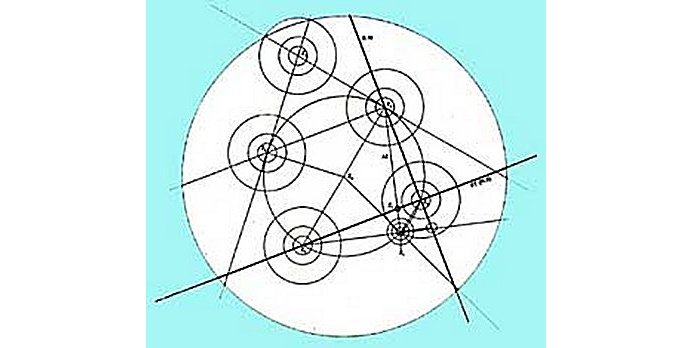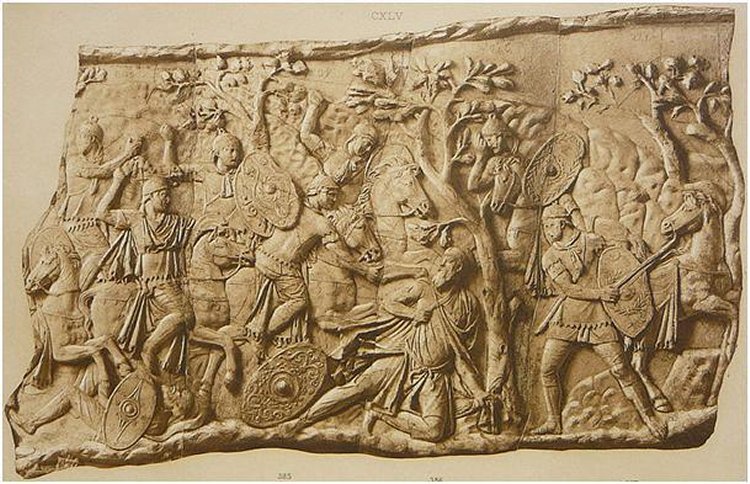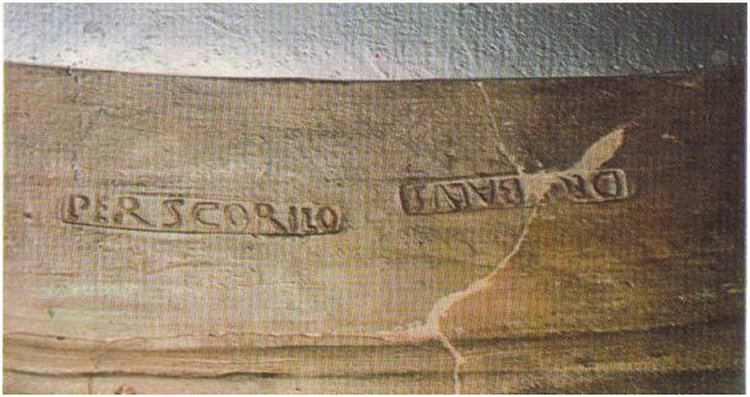Sarmizegetusa And Its Andesite Sun Artifact Similar To The Mayan Calendar
A. Sutherland - AncientPages.com - Sarmizegetusa (today Gradistea Muncelului) County was the capital of pre-Roman Dacia, located in the Orastie Mountains, in present-day Romania. Before the wars with the Roman Empire, Sarmizegetusa was also the most important military, religious and political center of the Dacians.
It's a complex of sanctuaries situated on a cliff at an altitude of 1200 m, with a leading, large round sanctuary and the so-called "andesite sun" artifact.
The sanctuaries were located on a terrace, which had been linked previously mentioned gate by a paved road. Today, it's unknown if Sarmizegetusa had seven or eight quadrilateral sanctuaries because the Romans destroyed them
The fortress, a strategic center of defense, has a quadrilateral (a four-sided polygon) shape and massive stone blocks with 3m thick and approximately 4-5m high walls, constructed on five terraces, an area of almost 30,000 m².
The sacred zone of Sarmizegetusa includes several rectangular temples, and the bases of their supporting columns are still visible in regular arrays.
Perhaps the most enigmatic construction at the site is the large circular sanctuary. It consisted of a set of timber posts surrounded by a timber circle which in turn was surrounded by a low stone curb.
The andesite sun and the great round sanctuary from Sarmizegetusa Regia. (photo from The cultural Heritage of Romania, (Cluj-Napoca, 2004)
The layout of the timber settings of the Sarmizegetusa fortress bears an intriguing resemblance to the stone monument at Stonehenge in England.
We find another curious resemblance at Sarmizegetusa's most crucial artifact, "andesite sun," which was probably used as a sundial. The artifact is very similar to the famous Mayan calendar. The Dacian culture was influenced by contact with Hellenistic Greece. The sundial may have resulted from the Dacians' exposure to Hellenistic learning in geometry and astronomy. The capital of Dacia was conquered and destroyed by the Roman army in 106 AD.
Its ruins were unearthed for the first time in 1923 due to excavations under the leadership of prof. DM Teodorescu of the Department of Archaeology, the University of Cluj-Napoca, followed by other diggings until 1944.
Since it is known that Dacian culture was influenced by contact with Hellenistic Greece, the sundial may have resulted from the Dacians’ exposure to Hellenistic learning in geometry and astronomy.
Sarmizegetusa Regia also had a residential area of 3 km, with dwellings and workshops. It was a vast civil settlement with many homes, workshops, warehouses, barns, and a water reservoir.
People lived below the citadel in settlements built on artificial terraces and a system of ceramic pipes channeled running water into the nobility's residences. The archaeological inventory found at the site demonstrates that Dacian society had a relatively high standard of living.
At 100 meters to the east of the complex, there was the city and shrines of various shapes and sizes. The sanctuaries were located on a terrace linked with the gate by a paved road. Today, it's unknown if Sarmizegetusa had seven or eight quadrilateral sanctuaries because the Romans destroyed them.
The mathematical pattern of Sarmisegetusa includes all cyclopean buildings of the Dacians built at an altitude of 1,045m). The line of the North coincides precisely with the arrow of the so-called Andesite Sun.
At the ancient site of Sarmizegetusa, we encounter evidence of our ancestors' knowledge of cosmogonical topography, divine geometry, and cosmic harmony and several artifacts offering proof that the Dacians were an advanced society.
The Dacians were skilled metalworkers. Excavations conducted in the area revealed tools such as meter-long tongs, hammers, and anvils used to make 400 metallic artifacts — scythes, sickles, hoes, rakes, picks, pruning hooks, knives, plowshares, and carpenters' tools.
Decebalus’ suicide, from Trajan’s Column (Scene CXLV)
However, among the most important finds unearthed at the site, is a medical kit, in a brassbound wooden box with an iron handle, containing a scalpel, tweezers, powdered pumice and miniature pots for pharmaceuticals, and a large funerary vessel (0.6 m) high and 41 in (1 m) across, bearing an inscription in the Roman alphabet: DECEBAL PER SCORILO, i.e. 'Decebalus, son (cf. Latin puer) of Scorilus'.
The Decebalus per Scorilo inscription. The Decebalus inscription was stamped on a huge vase twenty-four inches (0.6 meters) high and forty-one inches (1 meter) across. It is stamped in mirror-writing, in the Latin alphabet. image source
Decebal (Decebalus) (ruled 87-106) was the last king of Dacia. The Romans defeated the Dacians in the Battle of Tapae in 88; they set fire to several towns and moved towards Sarmizegetusa, the kingdom's capital.
The Romans laid siege to the town and cut Sarmizegetusa's water supply. The Dacians eventually surrendered, and Decebalus committed suicide. Dacia became a Roman province.
Dacian Fortress Sarmizegetusa is on the UNESCO World Heritage list.
Written by – A. Sutherland - AncientPages.com Senior Staff Writer
Copyright © AncientPages.com All rights reserved. This material may not be published, broadcast, rewritten or redistributed in whole or part without the express written permission of AncientPages.com
Expand for referencesReferences:
I. Grumeza, "Dacia: Land of Transylvania, Cornerstone of Ancient Eastern Europe"
More From Ancient Pages
-
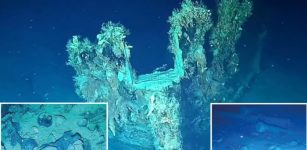 New Treasures Found On The Legendary Shipwreck San José Near Colombia
Archaeology | Aug 9, 2024
New Treasures Found On The Legendary Shipwreck San José Near Colombia
Archaeology | Aug 9, 2024 -
 What Happened To The Pythagorean Brotherhood?
Ancient History Facts | Apr 5, 2021
What Happened To The Pythagorean Brotherhood?
Ancient History Facts | Apr 5, 2021 -
 History Of Bread: Basic Food Of Man In Ancient And Contemporary Cultures Around The World
Ancient Traditions And Customs | Jun 18, 2023
History Of Bread: Basic Food Of Man In Ancient And Contemporary Cultures Around The World
Ancient Traditions And Customs | Jun 18, 2023 -
 Unknown Sketch Of Jesus Christ By Leonardo Da Vinci Could Be The Holy Grail Of Art
News | Nov 24, 2020
Unknown Sketch Of Jesus Christ By Leonardo Da Vinci Could Be The Holy Grail Of Art
News | Nov 24, 2020 -
 Shakespeare ‘Borrowed’ Phrases From Little-Known Manuscript – Study Reveals
News | Mar 9, 2018
Shakespeare ‘Borrowed’ Phrases From Little-Known Manuscript – Study Reveals
News | Mar 9, 2018 -
 Cyrus The Great Cylinder – Legacy Of The Ancients
Artifacts | Aug 25, 2015
Cyrus The Great Cylinder – Legacy Of The Ancients
Artifacts | Aug 25, 2015 -
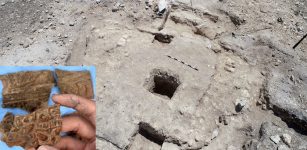 Exploring Ancient Secrets Of An Ancestral Maya Neighborhood And Some Puzzling Buildings
Archaeology | Sep 10, 2022
Exploring Ancient Secrets Of An Ancestral Maya Neighborhood And Some Puzzling Buildings
Archaeology | Sep 10, 2022 -
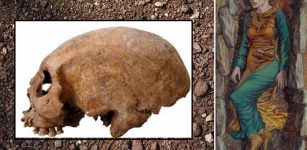 Unusual Viking Women With Elongated Heads On Gotland, Sweden
Featured Stories | Mar 28, 2024
Unusual Viking Women With Elongated Heads On Gotland, Sweden
Featured Stories | Mar 28, 2024 -
 Mysterious Unknown Beings Who Walked The Earth With Humans
Featured Stories | Sep 15, 2020
Mysterious Unknown Beings Who Walked The Earth With Humans
Featured Stories | Sep 15, 2020 -
 Artifacts From King Henry VIII’s Warship The Mary Rose – Analyzed
Archaeology | Apr 28, 2020
Artifacts From King Henry VIII’s Warship The Mary Rose – Analyzed
Archaeology | Apr 28, 2020 -
 Incredible Treasure Discovered In The Secret Chamber Of The Great Pyramid 1,200 Years Ago May Offer Proof Of Long-Lost Scientific Knowledge
Artifacts | Dec 31, 2018
Incredible Treasure Discovered In The Secret Chamber Of The Great Pyramid 1,200 Years Ago May Offer Proof Of Long-Lost Scientific Knowledge
Artifacts | Dec 31, 2018 -
 Ancient Burial Site At Vulci Reveals Treasure Of Coins Dated To 3rd Century B.C
Archaeology | Jul 12, 2018
Ancient Burial Site At Vulci Reveals Treasure Of Coins Dated To 3rd Century B.C
Archaeology | Jul 12, 2018 -
 Ancient Pathogens Released From Melting Ice Could Wreak Havoc On The World – New Analysis Reveals
Featured Stories | Aug 2, 2023
Ancient Pathogens Released From Melting Ice Could Wreak Havoc On The World – New Analysis Reveals
Featured Stories | Aug 2, 2023 -
 Unique Early Alemannic Chamber Grave Discovered In Gerstetten, Germany
Archaeology | Sep 20, 2024
Unique Early Alemannic Chamber Grave Discovered In Gerstetten, Germany
Archaeology | Sep 20, 2024 -
 On This Day In History: Stone Of Destiny Stolen From Westminster Abbey In London – On Dec 25, 1950
News | Dec 25, 2016
On This Day In History: Stone Of Destiny Stolen From Westminster Abbey In London – On Dec 25, 1950
News | Dec 25, 2016 -
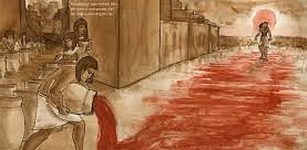 Lady Of Drunkenness And How God Ra Wanted To Teach Humans A Lesson
Egyptian Mythology | Jun 20, 2019
Lady Of Drunkenness And How God Ra Wanted To Teach Humans A Lesson
Egyptian Mythology | Jun 20, 2019 -
 Knowledge Of Divine Alien Beings And High-Tech In Ancient Egypt Described In Sacred Books And Papyrus – The God Who Spoke About Time Dilation – Part 1
Featured Stories | May 12, 2021
Knowledge Of Divine Alien Beings And High-Tech In Ancient Egypt Described In Sacred Books And Papyrus – The God Who Spoke About Time Dilation – Part 1
Featured Stories | May 12, 2021 -
 Why Was Lovesickness A Feared Disease During The Middle Ages?
Ancient History Facts | Feb 8, 2018
Why Was Lovesickness A Feared Disease During The Middle Ages?
Ancient History Facts | Feb 8, 2018 -
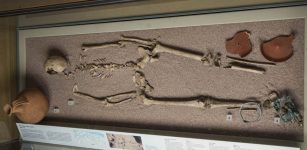 London Was Always A Multicultural City, DNA Research Confirms
Archaeology | Nov 26, 2015
London Was Always A Multicultural City, DNA Research Confirms
Archaeology | Nov 26, 2015 -
 Aaru – Field Of Reeds: Kingdom Of Osiris Was The Ancient Egyptian Paradise
Myths & Legends | Feb 29, 2024
Aaru – Field Of Reeds: Kingdom Of Osiris Was The Ancient Egyptian Paradise
Myths & Legends | Feb 29, 2024




